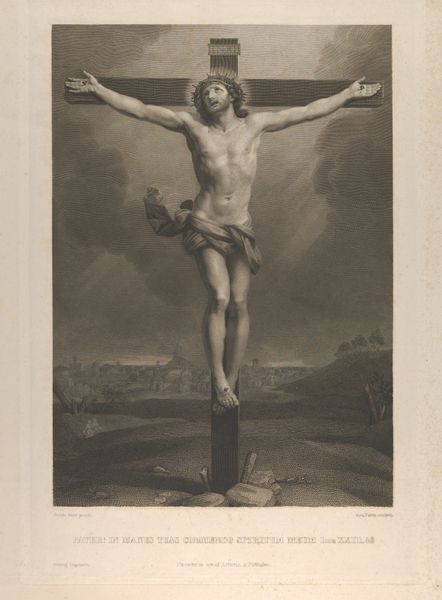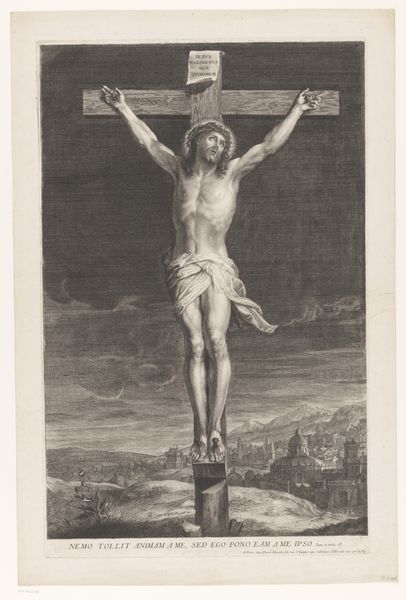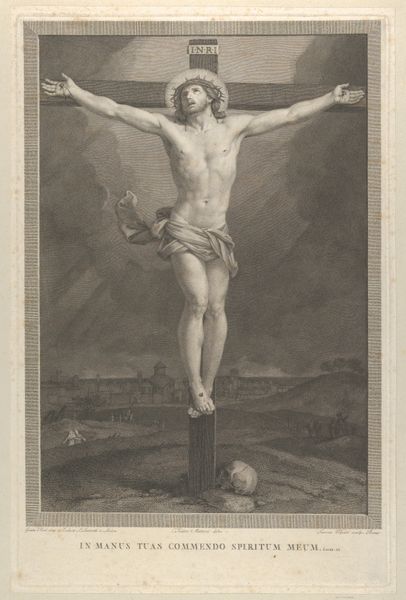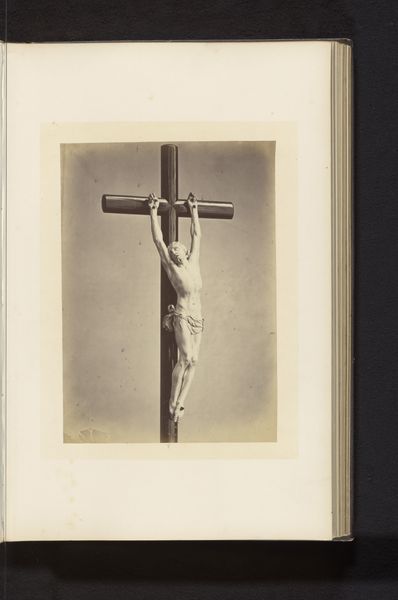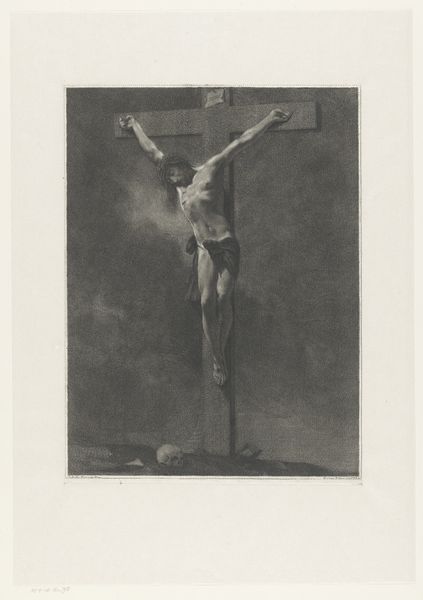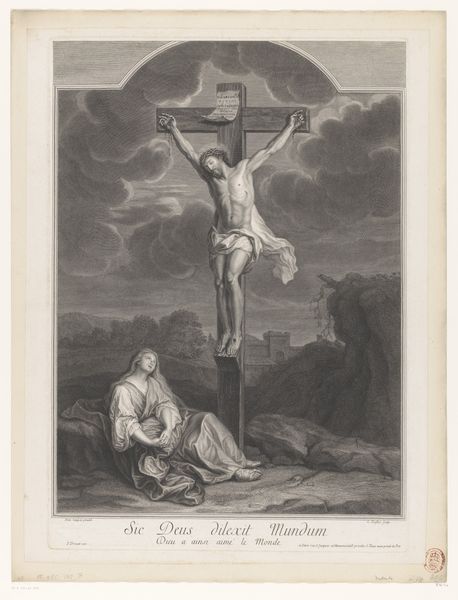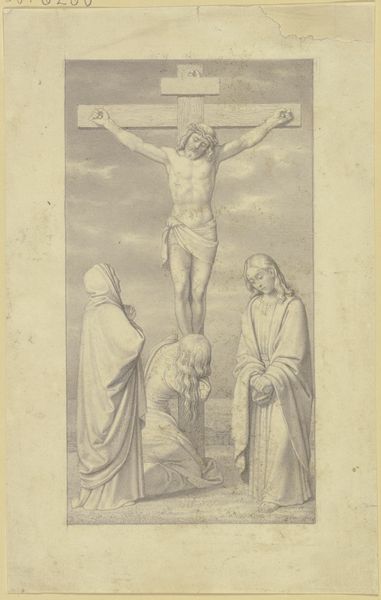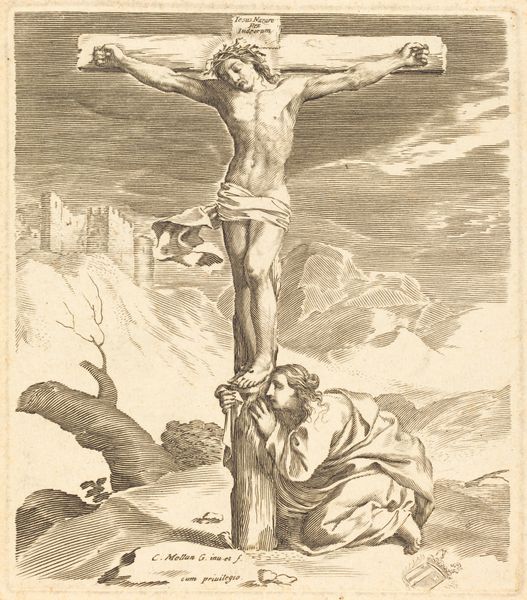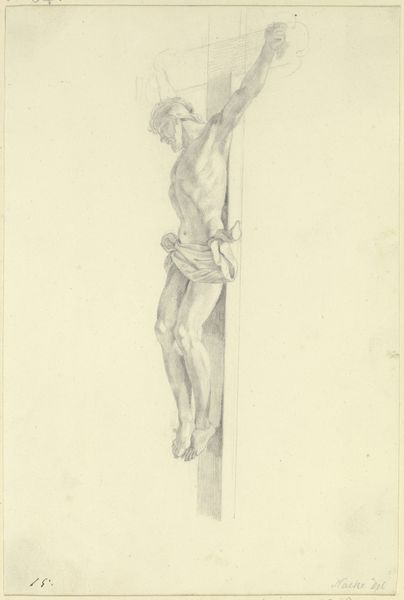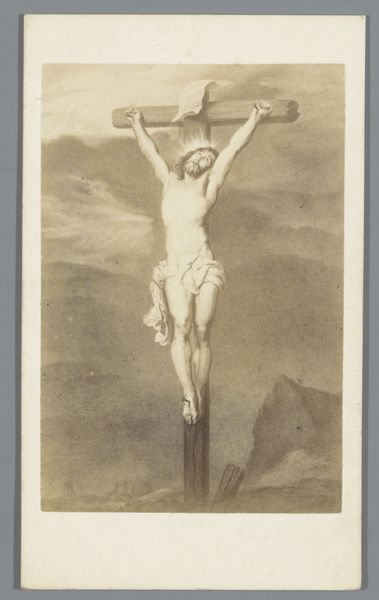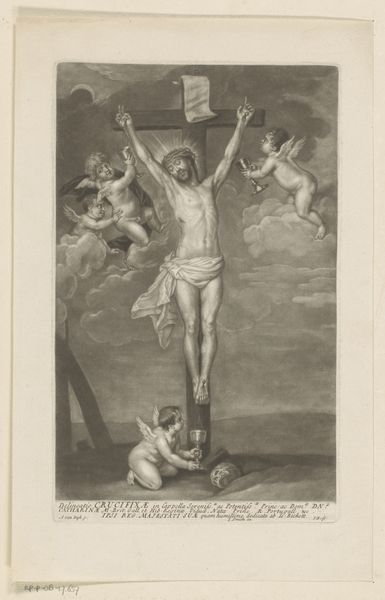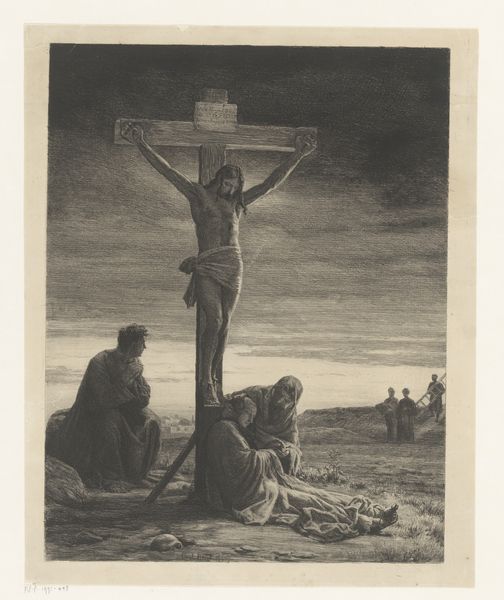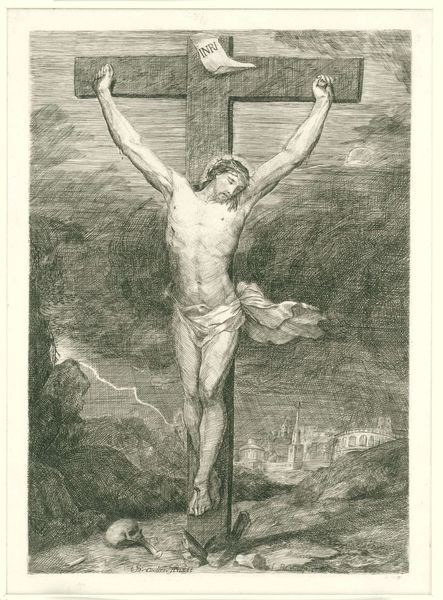
print, engraving
#
baroque
# print
#
figuration
#
history-painting
#
engraving
Dimensions: height 162 mm, width 102 mm
Copyright: Rijks Museum: Open Domain
Editor: Here we have Claude Mellan’s "Crucifixion of Christ," an engraving from 1665. It’s quite stark, isn't it? The delicate lines creating such a monumental, yet somber scene. How do you interpret the symbolism within this piece? Curator: This isn’t just a depiction of an event, but a careful arrangement of symbols meant to trigger collective cultural memory. The cross, of course, is central - its wood evoking both suffering and sacrifice. Notice the letters ‘INRI’ above; do you know their significance? Editor: I believe it stands for "Jesus of Nazareth, King of the Jews." Curator: Exactly! It's a declaration, but also a challenge to earthly power. The figure of Christ, almost ethereal in Mellan's rendering, is a visual representation of the divine made human, enduring earthly pain. Look closely at the swirling clouds – do they evoke something for you? Editor: A sense of turmoil, maybe divine anger or grief? Curator: Precisely. These aren't just atmospheric effects; they act as emotional signifiers, contributing to the drama and weight of the scene. What do you make of the landscape at the base? Editor: It's quite barren, adding to the feeling of desolation and perhaps reflecting the spiritual emptiness associated with the event. Curator: Indeed. This print acts as a mirror, reflecting our understanding and cultural memory. The starkness amplifies emotional significance. It compels us to confront enduring questions about faith, power, and sacrifice, a potent demonstration of shared visual understanding. Editor: Thank you, that’s given me a lot to consider about how much these images carried within them. Curator: My pleasure! It is essential to acknowledge these works for the ways that they reflect both conscious intention and deeper cultural values.
Comments
No comments
Be the first to comment and join the conversation on the ultimate creative platform.

